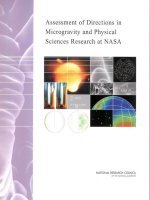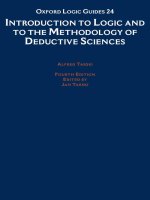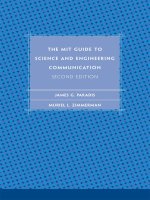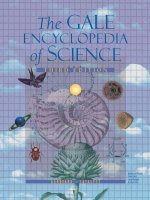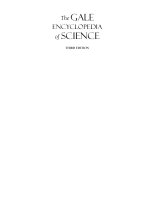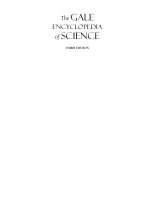- Trang chủ >>
- Khoa Học Tự Nhiên >>
- Vật lý
5 15 the light bulb (physical science)
Bạn đang xem bản rút gọn của tài liệu. Xem và tải ngay bản đầy đủ của tài liệu tại đây (2.69 MB, 10 trang )
Genre
Nonfiction
Comprehension Skill
Cause and Effect
Text Features
•
•
•
•
Labels
Call Outs
Captions
Glossary
Science Content
Electricity
Scott Foresman Science 5.15
ISBN 0-328-13960-2
ì<(sk$m)=bdjgag< +^-Ä-U-Ä-U
Vocabulary
Extended Vocabulary
circuit diagram
conductor
current
electromagnet
insulator
resistor
volt
electromagnetic induction
fluorescent lamp
global warming
incandescent lamp
kerosene
lasers
light pollution
What did you learn?
1. What did Benjamin Franklin prove in his
lightning experiment?
2. What kind of lighting do many advertising
signs use?
3. Why did tungsten replace carbon as a
filament for light bulbs?
Picture Credits
Every effort has been made to secure permission and provide appropriate credit for photographic material.
The publisher deeply regrets any omission and pledges to correct errors called to its attention in subsequent editions.
4.
Two types of lighting
popular today are incandescent and
fluorescent lighting. Write to explain the
similarities and differences between the
two. Include details from the book to
support your answer.
5.
Cause and Effect What happens when a
magnet is moved in and out of a wire coil?
Photo locators denoted as follows: Top (T), Center (C), Bottom (B), Left (L), Right (R), Background (Bkgd).
5 (CR, BL) Science Museum, London/DK Images; 6 Museum of the City of New York/Corbis; 7 Science Museum, London/
DK Images; 8 Clive Streeter/Courtesy of The Science Museum, London/DK Images; 9 (CL) Hulton-Deutsch Collection/
Corbis, (TR) Science Museum, London/DK Images; 10 (BL) Schenectady Museum/Hall of Electrical History Foundation/
Corbis, (R) The Science Museum/©Dorling Kindersley; 13 (B) Maximillian Stock Ltd/Photo Researchers, Inc.;
14 Planetary Visions Ltd/Photo Researchers, Inc.
Unless otherwise acknowledged, all photographs are the copyright © of Dorling Kindersley, a division of Pearson.
by Lillian Duggan
ISBN: 0-328-13960-2
Copyright © Pearson Education, Inc. All Rights Reserved. Printed in the United States of America.
This publication is protected by Copyright, and permission should be obtained from the publisher prior to any
prohibited reproduction, storage in a retrieval system, or transmission in any form by any means, electronic,
mechanical, photocopying, recording, or likewise. For information regarding permission(s), write to
Permissions Department, Scott Foresman, 1900 East Lake Avenue, Glenview, Illinois 60025.
3 4 5 6 7 8 9 10 V010 13 12 11 10 09 08 07 06 05
What You Already Know
Electricity exists because atoms often lose or gain
electrons, giving them a positive or negative charge.
Charges flow from one object to another. A conductor
is a material through which an electric charge can move
easily. A material that resists the flow of electric charge
is a resistor.
An electrical current is formed when charged
electrons flow in the same direction. Wires wrapped
in insulators are often used to carry electric current.
Insulators are strong resistors. They keep electric
current from escaping from the wires.
Electrical currents can travel in a circuit, or loop,
to power electric devices. Circuits can be simple or
complex. A simple circuit contains a source of energy,
such as a battery, and a conductor, such as a wire. It may
also include a switch, which opens or closes a gap in the
circuit, turning the circuit on or off.
battery
light bulbs
a simple electric circuit
wire
2
The energy of moving
electric charges in a circuit
is called electrical energy.
Resistors can change electrical
energy to other forms of
energy. A light bulb is a
resistor that transforms
electrical energy to light
energy. A circuit diagram is a
Electromagnets help to
map of a circuit with symbols
produce the image on
that represent each part. Most
this television screen.
circuits have more than one
branch or pathway. These are called parallel circuits.
Computers have complicated parallel circuits with
millions of branches.
Every electrical current produces a magnetic force.
An electromagnet is a magnet that works because of
an electrical current. In electromagnets, a current flows
through a coiled wire in a circuit. Many everyday
objects use electromagnets, including motors, doorbells,
and sound systems.
The light bulb is probably the most familiar
electrical device in the world. Let’s look at how the light
bulb was developed, and how it has changed our lives.
3
Making Light
Electric lighting was invented less than 150 years ago,
making it a relatively modern invention. For over a million
years, people used fire to produce light. Over the centuries,
fire was used in several different forms. About 70,000 B.C.,
people started using fire in lamps as a light source. The first
lamps were made of hollowed-out rocks, shells, or pottery
filled with a material soaked in animal fat. The burning fat
provided light. The ancient Egyptians used a saucer lamp
with a grooved indentation that supported the wick.
The wick controlled the rate of burning.
Burning wood creates
warmth and light.
this is an anno this is an
annothis is an anno
Later, candles were used to produce light. These consisted
of a wick surrounded by solid beeswax or animal fat.
In the eighteenth century, lamps similar to the kerosene
lamp shown below were developed. These lamps have a burner
that produces a flame. The flame comes out of a metal tube.
The lamp is controlled by a knob, and the glass
covering helps to make the flame look brighter.
Originally, these lamps burned different
types of vegetable oil for fuel. After 1859, when
petroleum became widely available, kerosene
became the fuel of choice. Kerosene is a fuel
made from petroleum.
By the early nineteenth century, many
city streets in Europe and the United
States were lit by gas lamps. Gas lamps
became popular in homes as well.
People used lamps and
candles for light for
thousands of years.
ancient
Egyptian oil lamp
this
is a label
4
beeswax
candle
this
is a label
kerosene
this is a lamp
label
5
Discovery of Electricity
People have known about electricity for a very long
time. The ancient Greeks made electrical charges by rubbing
pieces of amber with pieces of wool. The first machine to
create electric charges was invented in 1663 by a German
scientist named Otto von Guericke.
Benjamin Franklin, a famous American inventor,
discovered that lightning is actually electricity. In 1752,
he performed a famous experiment by flying a kite in a
lightning storm. He tied a key to the kite string near the end
he was holding. When Franklin saw a spark jump from the
key to his finger, he knew that the sky was full of electrical
charges. This experiment was very dangerous. If the kite had
been struck by lightning, Franklin could have been killed.
Another scientist who studied electricity was an
Italian man named Alessandro Volta. Volta started doing
experiments with electric current in 1791. He discovered
that when there were two different metals close to each
other, electricity would flow from
one to the other. This discovery
led him to develop the first electric
battery in 1800.
Volta’s battery, also called
a voltaic pile, was made of
alternating copper disks and zinc
disks separated by cardboard
disks soaked in salt water. Volta
found that the battery produced
continuous electricity. Today, the
unit of measurement of how much
electricity a battery or other power
source makes is called a volt, in
honor of Volta.
Cardboard soaked
in salt water
separates copper
and zinc disks.
Benjamin Franklin proved that lightning is a form of electricity.
6
Volta’s batteries were
made up of thirty to
forty pairs of disks.
7
Electromagnetism
During the early 1800s, several scientists were trying
to find a connection between electricity and magnetism.
In 1820, Hans Oersted, of Denmark, placed a compass near
a wire carrying an electric current. The needle of the
compass moved.
After his initial discovery, Oersted experimented with
more powerful batteries. When he placed a wire above a
compass needle and turned on the current, the needle moved
in one direction. When he put the wire below the needle, it
moved in the opposite direction. Oersted concluded that
the electricity in the wire produced a magnetic field that
moved the needle.
Oersted proved that electricity and magnetism were
connected. Many scientists paid attention to Oersted’s
work, including British scientist Michael Faraday.
compass needle is
deflected from a normal
north-south position
current-carrying wire
Oersted’s experiment revealed
the link between electricity
and magnetism.
8
Michael Faraday’s
experiment showed that
moving a magnet in and
out of a wire coil produces
a current in the wire.
Michael Faraday discovered
electromagnetic induction.
Faraday believed that if an electric current could create
a magnetic field, then a magnetic field could create an
electric current. In 1831, he tested his idea by wrapping a
paper tube with wire to make a coil. He connected the coil
to a galvanometer, an instrument that measures electric
current. Then Faraday moved a magnet back and forth
inside the tube. The galvanometer needle moved, which
showed that a current was flowing in the coil. Faraday had
discovered electromagnetic induction, the production of a
current by a magnetic field.
Joseph Henry, an American scientist, also discovered
electromagnetic induction around the same time as Faraday.
Faraday’s and Henry’s work led to the modern generators
that we use to produce electricity today.
9
Light Bulbs
People began using electric lighting during the 1870s.
The first commonly used electric light source was the
arc lamp. In an arc lamp, two rods are connected to
an electric current. When the rods are held
apart, bright sparks jump between them.
Edison’s
light bulb
The light produced by arc lamps was too
bright for small spaces, but worked well
in large buildings or outdoors.
Around 1878, both Thomas
Edison in the United States and
Joseph Swan in Britain invented the
incandescent lamp. An incandescent
lamp is an electric lamp. It has a
special thread called a filament that
gives off light when an electric current
carbon
filament
passes through it. Incandescent lamps
were perfect for lighting homes.
Thomas Edison,
one of the
inventors of
the light bulb
10
Modern
incandescent
light bulbs are
similar to the
ones invented by
Edison and Swan.
tungsten
filament glows
when electricity
flows through it
electrical contact
glass bulb
contains argon
and nitrogen
gas at low
pressure
metal screw
thread for
light socket
The first incandescent light bulbs were made of glass
with a carbon filament. The hollow bulbs had no air inside.
This kept the carbon wires from catching on fire from the
heat of the electricity. When electricity flowed into the
bulb, the filament glowed. Carbon was not the best material
for filaments. If the filament became too hot, it would
break quickly.
In 1913, carbon was replaced by the metal tungsten.
Tungsten glows brightly and lasts longer at high
temperatures. Most of today’s incandescent light bulbs
use tungsten filaments and are filled with special gases.
The gas helps the filament to last longer.
11
New Light Sources
In incandescent lamps, some of the electrical energy
is given off as heat instead of light. Discharge tubes were
invented to make light without the bulb getting too hot.
They contain a gas instead of a metal filament. Electricity
goes into the tube and causes the gas to glow. This turns less
energy into heat and more into light.
Two types of lamps that use discharge tubes are neon
lights and sodium street lamps. In neon lights, the tube is
filled with neon gas. These lights glow bright red. Neon lights
became popular for use in advertising signs in the 1920s.
Different gases are added to neon to create different colors.
Neon lights are often used to make colorful signs.
Sodium discharge lamps are
used for street lighting. But their
unpleasant yellow light makes
them unsuitable for indoor use.
Another type of discharge
lamp that is becoming more
common in homes is the
fluorescent lamp. A fluorescent
lamp contains vapor that makes
invisible rays when a current flows
through it. The inside of the tube
is coated with a special substance
that glows when these rays strike it.
Sodium lamps light up
streets around the world.
Fluorescent lights are more
expensive than incandescent bulbs,
but they last a lot longer.
Lasers are devices that produce a very
concentrated, high-energy beam of light. This light
can be so powerful that it can even cut through metal.
Lasers can
be used to
cut through
metal.
12
13
Planet of Light
Electric lighting has greatly changed our way
of life. Light bulbs allow us to see when it is
dark. They are not as dangerous as candles and
kerosene lamps. We can shop, watch sporting
events, and travel the highways at night.
But a problem with electric lighting is light
pollution. Light pollution is light that interferes
with our view of the night sky. Scientists are
working hard to limit light pollution. They
want people and towns to turn off unnecessary
lights at night and to stop using lights that shine
upward. Many communities have passed laws
that limit light pollution.
Another hazard of electric lighting and
electricity is air pollution. Most electricity is
generated in power plants by burning fossil fuels.
Burning fossil fuels releases pollution into the
air. Many scientists believe that this pollution
is the cause of global warming. Global warming
is an increase in Earth’s temperature. It causes
climate changes that may have very harmful
impacts on plants, animals, and people in the
future. Using less electricity and developing
cleaner sources of energy are two ways to
reduce pollution and global warming.
14
This image taken from
space shows North
America’s electric
lights at night.
15
Glossary
Vocabulary
Extended Vocabulary
circuit diagram
electromagnetic
conductor
induction
current
electromagnet
flinsulator
uorescent lamp
resistor
volt
global warming
electromagnetic induction
the production
of a lamp
current by a
fluorescent
magnetic
field warming
global
incandescent lamp
a lamp kerosene
that uses vapor and a special
coatinglasers
to produce light
light pollution
the average increase in Earth’s
temperature, which causes potentially
damaging climate changes
incandescent lamp
an electric lamp in which a filament
gives off light when heated by an
electric current
kerosene
a fuel made from petroleum
devices which produce a
concentrated, high-energy
Picture Credits
Every effort has been made to secure permission and provide appropriate credit for photographic material.
form of light
The publisher deeply regrets any omission and pledges to correct errors called to its attention in subsequent editions.
lasers
Photo locators denoted as follows: Top (T), Center (C), Bottom (B), Left (L), Right (R), Background (Bkgd).
light pollution
light that interferes with our view
of the night sky
5 (CR, BL) Science Museum, London/DK Images; 6 Museum of the City of New York/Corbis; 7 Science Museum, London/
DK Images; 8 Clive Streeter/Courtesy of The Science Museum, London/DK Images; 9 (CL) Hulton-Deutsch Collection/
Corbis, (TR) Science Museum, London/DK Images; 10 (BL) Schenectady Museum/Hall of Electrical History Foundation/
Corbis, (R) The Science Museum/©Dorling Kindersley; 13 (B) Maximillian Stock Ltd/Photo Researchers, Inc.;
14 Planetary Visions Ltd/Photo Researchers, Inc.
Unless otherwise acknowledged, all photographs are the copyright © of Dorling Kindersley, a division of Pearson.
ISBN: 0-328-13960-2
Copyright © Pearson Education, Inc. All Rights Reserved. Printed in the United States of America.
This publication is protected by Copyright, and permission should be obtained from the publisher prior to any
prohibited reproduction, storage in a retrieval system, or transmission in any form by any means, electronic,
mechanical, photocopying, recording, or likewise. For information regarding permission(s), write to
Permissions Department, Scott Foresman, 1900 East Lake Avenue, Glenview, Illinois 60025.
3 4 5 6 7 8 9 10 V010 13 12 11 10 09 08 07 06 05
16
What did you learn?
1. What did Benjamin Franklin prove in his
lightning experiment?
2. What kind of lighting do many advertising
signs use?
3. Why did tungsten replace carbon as a
filament for light bulbs?
4.
Two types of lighting
popular today are incandescent and
fluorescent lighting. Write to explain the
similarities and differences between the
two. Include details from the book to
support your answer.
5.
Cause and Effect What happens when a
magnet is moved in and out of a wire coil?



